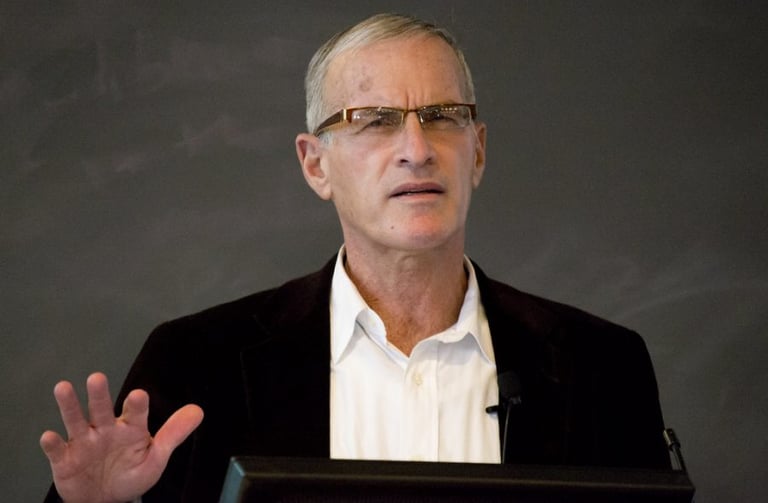Genocide, Cleansing, and Ash: Finkelstein on Israel's Plan for Gaza
Professor Norman Finkelstein, himself the son of Holocaust survivors, deliberately invokes a term of immense historical weight to describe Israel's actions in Gaza since October 7th. He argues that what is unfolding is not a conventional military operation, but the execution of a comprehensive and brutal plan he calls Israel's "Final Solution" for the Palestine question. From his perspective, this war is not designed merely to eliminate a militant group, but to permanently and irreversibly end the Palestinian presence in the Gaza Strip. This harrowing plan, he posits, is built upon interconnected components, chief among them being genocide.
7/9/20252 min read


Professor Norman Finkelstein, himself the son of Holocaust survivors, deliberately invokes a term of immense historical weight to describe Israel's actions in Gaza since October 7th. He argues that what is unfolding is not a conventional military operation, but the execution of a comprehensive and brutal plan he calls Israel's "Final Solution" for the Palestine question. From his perspective, this war is not designed merely to eliminate a militant group, but to permanently and irreversibly end the Palestinian presence in the Gaza Strip. This harrowing plan, he posits, is built upon interconnected components, chief among them being genocide.
Finkelstein contends that this policy of slaughter receives a powerful social and political license from within Israeli society. Citing polling data, he paints a disturbing picture: when a large majority of Israeli Jews believe the army has used "too little" force in Gaza, and nearly 63 percent believe there are "no innocent individuals in Gaza," it effectively grants the military a green light to act without restraint. This sentiment, which regards an entire population as a legitimate enemy, translates directly into battlefield tactics that transcend any conventional military logic. To illustrate this, Finkelstein uses the shocking metaphor of a "mousetrap" to describe the attacks on humanitarian aid distribution centers, where desperate, hungry civilians are gathered and then systematically gunned down. This, he argues, reveals a sinister intent to use basic human needs as a tool for slaughter.
But this systematic killing is not an end in itself; it is a means to achieve the plan's second component: ethnic cleansing. The forced and relentless displacement of Gaza's population—from north to south, and then from one so-called "safe zone" to the next—is a strategy to uproot a people from their land. The ultimate objective is to create an irreversible reality in which the displaced population is cornered at the Egyptian border with no homes to return to.
To ensure the success and permanence of this ethnic cleansing, the third and final component is enacted: rendering Gaza completely uninhabitable. This targeted devastation goes far beyond military necessity, involving the systematic destruction of hospitals, schools, universities, water treatment plants, and bakeries. The goal of annihilating this vital infrastructure, and even erasing cultural and historical sites, is to ensure that even if the war were to end tomorrow, there would be no homeland to return to. Gaza must be turned to ash so that life cannot be sustained there.
Perhaps the most startling part of Finkelstein's analysis is not just the mechanics of this plan, but his exploration of the nature of the violence that drives it. Drawing a historical comparison, he makes a critical distinction: "The Nazis," he posits, "wanted a scientific, objective, and impersonal approach to the Holocaust." In contrast, he believes the actions of the Israeli army in Gaza are carried out with "sadistic pleasure." This sadism manifests itself in the videos soldiers post of themselves dancing in the ruins of Palestinian homes, mocking personal belongings, and in reports of them shooting children "for fun." This approach, he concludes, signifies a profound process of dehumanization, where the suffering and death of the other has become a source of entertainment.
Amidst all this, Netanyahu's government has also leveraged a shrewd diversionary tactic: escalating the confrontation with Iran. By shifting global media and political attention toward a potential regional war, Israel secured a "window of opportunity" to advance its plan in Gaza with far less international scrutiny. While the world worried about a larger conflict, the killing and destruction in Gaza continued with greater intensity.